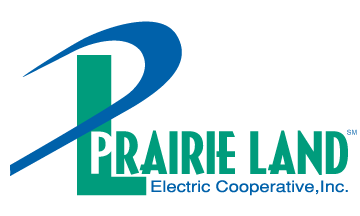This story was included in the July 2022 Kansas Country Living Centerspread.
Summer did not officially arrive until June 21, but we all know that Mother Nature doesn’t adhere to the calendar in Kansas. We have already seen a wide range of temperatures, with some areas of the state reaching at or near 100 degrees as early as May.
High temperatures increase electric demand when electric consumers crank air conditioners to stay cool. In recent reports, the North American Electric Reliability Corp. (NERC) and the Federal Energy Regulatory Commission (FERC) said these high temperatures, combined with other conditions, could lead to an unstable electric supply during peak summer conditions. Other conditions include widespread droughts, which increase electricity demand for irrigation; the growing possibilities of extreme weather events; naturally diminished wind energy output during hot days; and rail shipping interruptions and export issues for coal deliveries to power plants.
The reports by NERC and FERC indicate that the Southwest Power Pool (SPP), the regional grid operator that manages the transmission grid in 14 states including Kansas, is included in the areas of elevated risk for summer reliability issues.
While the recent reports by NERC and FERC were not optimistic news for electric utilities—like Prairie Land Electric Cooperative, Inc. and Sunflower Electric Power Corp., which provides us with wholesale transmission and generation—meeting electricity demand is always at the forefront of operational and financial strategies. Sunflower continually evaluates anticipated electric demand and takes strategic steps to meet not only the typical energy demand of electricity consumers served by its seven member distribution utilities but also the energy demand in energy-peaking situations, such as very hot summer days.
The recent reports underscore the importance of Sunflower’s balanced generation resource portfolio and calculated operating strategies. Sunflower’s fuel-diverse generation fleet—which includes coal and natural gas units, as well as energy contracts for wind, solar and hydro—serves as a hedge against rising prices of a particular fuel resource. For example, the price of coal is very stable compared to the volatility of natural gas pricing and is an effective hedge against the price of market energy, which is usually correlated to the price of natural gas. Coal-based Holcomb Station was certainly a shining star during the Winter Strom Uri event in 2021.
As previously mentioned, however, current coal deliveries have been impacted by railroad staffing issues. Therefore, Sunflower is re-evaluating how to deploy the unit to capitalize on its benefits during summer peak conditions. Sunflower has also proactively purchased more market energy products to guard against possible exceptionally high prices this summer and continue its mission of providing reliable energy to its member-owners at the lowest possible price.
“There are a lot of variables intrinsic to supplying reliable energy as economically as possible,” said Corey Linville, Sunflower’s vice president of power supply and delivery, “but we are analyzing future scenarios to best prepare for possible unusual summer conditions. We believe we have a strong operating and financial hedging plan in place to help guard against electric interruptions and high cost spikes.”
SPP is also modifying its strategies to fortify the electric grid during extreme conditions. The SPP requires its member utilities to have fuel resources that equate to 12 percent more than their annual peak load requirements, but Winter Storm Uri revealed potential issues with available capacity during such events. Some of these issues are associated with forced outages, as well as electric generating resources that have fuel supply issues, such as natural gas, during these times. The lack of availability of energy from renewable resources is also an issue. Last summer there were several periods when the reliability margin (difference between available capacity and load + contingency reserve requirements) in SPP dropped below 20 percent.
It will take several years to fully implement SPP’s new supply adequacy rules and for load serving entities to firm up existing capacity and procure any needed new capacity to comply with the new rules. In the meantime, SPP will, at times, continue to operate with a relatively low reliability margin at times.
“The electric industry is ever evolving,” said Stuart Lowry, Sunflower’s president and CEO. “The regional energy market brings many benefits but also many new challenges, including the risk of generation resource and operational decisions made by other utilities. Our members and those they serve can have confidence that we will analyze and respond to these risks with their best interests in mind.”
